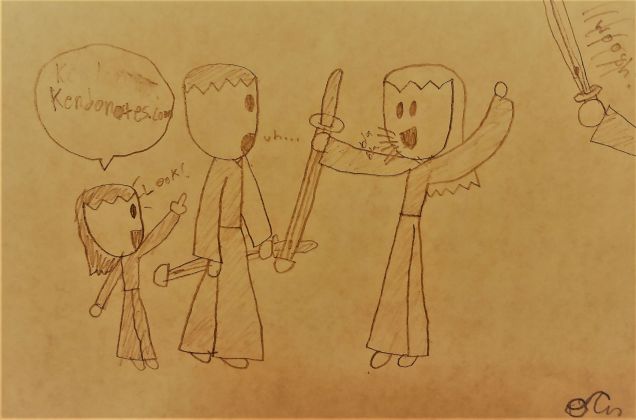
At a local community center, I came across a sports teacher who seems to have a way with little kids (pre-kindergarten usually). I call him the “Child Whisperer.”* Whenever I’d pass by his class and watch him in action, he’d give instructions with a soft, calm voice (in between different movement-oriented games and activities). And the children would listen attentively and remain fairly quiet. That caught my attention as I don’t often see such orderly behavior with pre-kindergarten kids.
His class sizes numbered from ten to twenty students typically. He never raised his voice. I recently learned that he is well-known and sought after in the community for this remarkable ability to teach children.
This is in stark contrast to my experience with the older children (6 years old and older) that I have been teaching kendo to for the past year and a half. There have been times when the kids would be engrossed in talking, not listening to my instructions, and I’d raise my voice. Though there may be kiai from a class for those in bogu running in parallel in the same dojo space, it remains nonetheless perplexing to me. I’d often wonder how the Child Whisperer can instruct with apparent ease and calmness. I have asked him about this and have participated in one of his classes as if I were a child. (The kids had wide grins on their faces saying things like: “What are you doing here?” or “Hey, you’re not a kid!”)
Here’s two things that I’ve learned from him.
First, he sets boundaries.
He explained that as long as the children are behaving within the boundaries, they can have fun. When a child does not follow instructions, I have seen him tell that child to go to the side and have a time-out with one of his assistants. His tone of voice remains the same – soft and calm. No raised voice, yelling, sense of frustration or anger. I have tried following suit by establishing ground rules and three increasing levels of “punishments” for repeat offenders as the children in kendo includes older ones: a verbal warning, a punishment that the kids propose (e.g. five push-ups) and a time-out. The kids seem to love demonstrating the punishment that they design. Fascinating. However, keeping a watchful eye and holding the kids accountable remains a challenge for me.
Second, after he has explained or demonstrated an exercise or technique, he has at least one child demonstrate it as a model.
He’d ask a particular child or ask for a volunteer to demonstrate the exercise. Several of the children would raise their hand to volunteer. If the selected child failed to do a satisfactory job, he’d express that and get another to demonstrate the exercise until it had been demonstrated correctly. (He’d also give feedback to the children during the activity portion between instructions: “Yes, good job Michael.” “No, you need to hop with both feet Taylor.”)
I have recently started incorporating this “tip.” I ask one or two children to demonstrate an exercise or activity during the kendo classes and have noticed a difference. The children seem much more attentive – to me and to the child demonstrating the exercise. Perhaps it is because they realize that they may be selected and need to pay attention. Some kids raise their hands and wish to be selected. Perhaps that arises from a desire to be recognized and have attention.
The above two tips seem very helpful so far. A “Thank you!” to the Child Whisperer. I have a deep respect for those like the Child Whisperer who can teach well. They make it look so easy.
* A child whisperer would be to children as a “horse whisperer” would be to horses. A highly-skilled, attuned and expert trainer.
Copyright 2019 KendoNotes.com